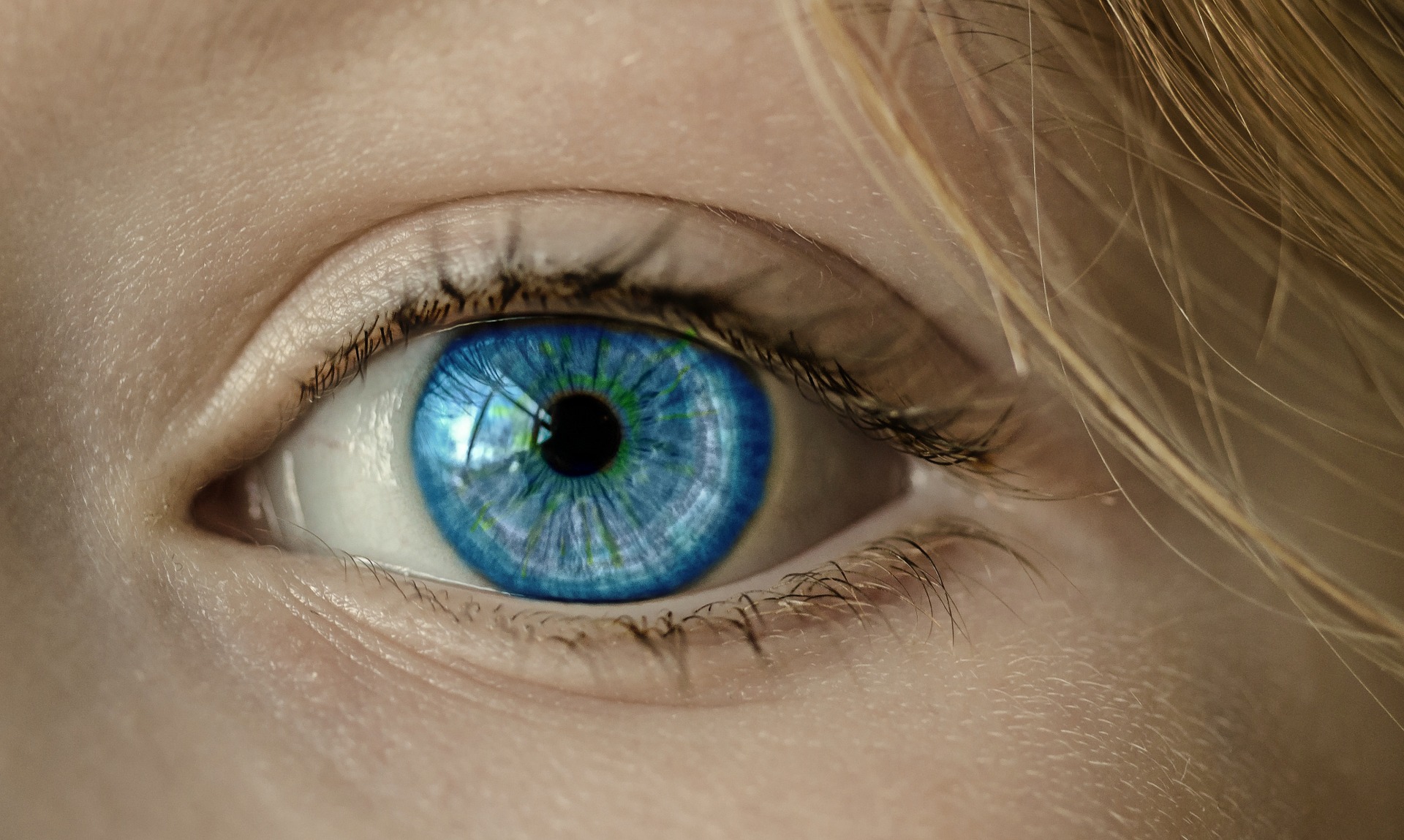Exploring the World’s Rarest Eye Colors
You may not be able to fathom the fact that the eye, in humans, has a huge range of colors. It is likely that you may have wondered what the rarest eye color is, but wonder not; there are quite a few! Frequently seen colors such as regular black, brown, blue, gray, and even green are widely acknowledged throughout the world. Nonetheless, others, such as violet, are thought of as rare and have incredible appeal. You may have seen the rarest eye color, but do you know how it came into being? It is worth your while to be educated about the world’s unique eye colors and the science lying behind them.
 Layala contact lenses ad featuring @THEHALA (Artboard 1 copy 6-100)
Layala contact lenses ad featuring @THEHALA (Artboard 1 copy 6-100)
Understanding Eye Color
Before diving into the arena of the rarest eye color, it is vital to know the way in which eye color gets established. The color of the eyes is prominently affected by the distribution as well as the amount of a particular pigment that is called melanin. This lies in the iris. The iris is the colored portion of the eye. Your eye color will be dark if you have more of the content of melanin in your iris. The genes that people may inherit from their mothers and fathers have a phenomenal role in the establishment of eye color. The interplay of genes plus other factors inherited from our parents decide the physical traits we possess.
 Woman wearing contact lenses (Cosmo Gray_Layala6268)
Woman wearing contact lenses (Cosmo Gray_Layala6268)
The Most Common Eye Colors
To offer a bit of context, it is worth touching upon a few common eye colors. Brown eyes are the most widespread globally, with most of the world’s population possessing this color. In the realm of uncommon eye colors, although beautiful to behold, blue is rarer than brown. Blue eyes may be relatively common in specific places, like, North America and Europe, but are quite uncommon in others, like Asia. Then you have those delightful hazel and green hues that fall within a category in between. While blue eyes may be coveted over brown eyes, the rarest eye color has true adoration and is one that goes against what is considered the norm.
 Two women wearing contact lenses (LayalaD27378)
Two women wearing contact lenses (LayalaD27378)
The World’s Rarest Eye Colors
If the rarest eye color has its own rare appeal, then you can be sure that you can fake it with contact lenses available today. Nonetheless, those with naturally rare eye colors are the lucky ones born with hues that defy the norm. The following hues fall into this “rare” set, and you may see different shades of rare color in different people:
Amber
When you see someone with amber eyes, their eye color will look like a fusion of copper, gold, and green. Eyes look like gleaming gemstones. Amber shades are relatively rare and tend to exude a warmth that is mesmerizing.
Violet
Any article on eye color facts will tell you that violet eyes are the rarest of the rare. From deep purple hues to lilac shades, these colors are desired greatly. Violet eyes are the result of low melanin levels blended with the scattering of light. Some call the color violet, with regard to eye color, the world’s rarest eye color.
Red
The phenomenon of red eyes is mainly because of extremely low levels of melanin that cause the retina’s blood vessels to reflect light. This gives the look of red eyes. The color is very rare in human beings and is almost always linked to some medical issues. If you ever behold anyone with this rarest eye color, then you may likely ponder whether it is the consequence of genetic causes of eye color.
Heterochromia
Heterochromia is a special phenomenon in which a person has one eye of a certain color and the other of a different color. While talking of the rarest eye color, an even more distinct phenomenon is when multiple colors show within a single iris. Among the genetic causes of eye color, heterochromia occurs when the person has different kinds of melanin that are inherited.
 Woman wearing contact lenses (Polar Gray_1065)
Woman wearing contact lenses (Polar Gray_1065)
Causes of the Rarest Eye Color
Rare eye colors may come about from medical or genetic factors that affect the distribution and amounts of melanin present in the iris. The main causes of rare eye colors are:
Genetic Variations
Eye color is prominently decided by heredity and genetics. Genes play roles in eye color variation. Uncommon eye colors arise from certain mutations or collaborations of genes that work together. The genetic causes of eye color are among the most studied today.
Low Melanin Levels
Melanin is a specific pigment that is produced in the body, and it causes us to have certain eye colors. The amount of melanin that each person has is different from any other person, and the world’s rarest eye color is because of low levels of melanin. Additionally, the scattering of light occurs in different ways when low amounts of melanin are present. All this leads to different hues present in the eyes of various people.
Albinism
Albinism is a distinct genetic disorder that is exhibited by the absence/lowering of melanin. People who have albinism have extremely light-colored eyes, almost translucent, like blue/reddish hues.
Heterochromia
Heterochromia is a certain type of condition when someone has each eye of a different color. This typically happens when there are alterations in melanin levels between the irises of both individual eyes. It can also happen due to differing types of melanin that are present in a single iris.
Injuries/Medical Conditions
Medical conditions/injuries may result in the rarest eye color. For example, iris damage/eye trauma causes discoloration/heterochromia.
The Scattering of Light
Light scattering within the iris can lead to the presence of rare eye colors. For instance, violet eyes, which are among the rarest eye colors, are believed to be a result of light scattering in individuals with low melanin levels.
Cultural and Health Implications of Uncommon Eye Colors
In several cultures, rare eye colors are considered auspicious. They may even be linked with mystical/supernatural traits. Ancient legends often show people with remarkable eye colors as having special skills/abilities/power. Contrastingly, some cultures perceive the rarest eye color with fear and suspicion, and consider this a bad omen.
From the perspective of health, distinct eye colors may be connected to medical issues, such as albinism, which is due to the low production of melanin.
For those of us not blessed with those rare eyes we crave, we can always head to Eyewa and pick an ideal contact lens color we like!
 Two women wearing color contact lenses (Layala6049)
Two women wearing color contact lenses (Layala6049)
Frequently Asked Questions
Which eye color is the rarest?
Among all eye colors, red eyes are thought to be the rarest. They may be associated with conditions like albinism. The appearance of red eyes is due to an excessively low production of melanin.
Are there any health indications linked with rare eye color?
There are eye colors that may implicate specific medical conditions, such as red eyes due to albinism. This is genetic-oriented, in which there may be an excessive reduction of melanin or an absence of it. The disorder includes visual impairment in some cases, as well as heightened light sensitivity.
Can rare eye colors alter over time?
Eye color is the result of genetic inheritance, and once established at birth, does not change. Lighting conditions may affect the perception of variations in color, but the fundamental colors remain the same.
Is it possible that parents possess common eye colors, but their children have rare colors?
This is possible, as eye color is genetically passed on through a complex process with genes inherited from both parents.
What are some famous personalities possessing rare eye colors in pop culture and history?
Notable personalities, from musicians to actors, have exhibited rare eye colors. For instance, Elizabeth Taylor, the famous Hollywood actress, had the most incredible violet eyes. Also, British pop singer David Bowie had heterochromia, with one brown eye and one blue eye. Rare eye color only enhances the magnetism of famous personalities, boosting popularity.
Conclusion
If you are fortunate to have the rarest eye color, you can consider yourself blessed. Eye color has a lot to do with medicine and science as it has to do with considerable aesthetics. Among the rarest of the rare in eye color, you will discover hues of copper/gold and green/blue, plus shades that fall in between. Whatever eye color you have, there is a genetic cause for it, and if you have heterochromia, this should be celebrated, as it is very rare.







